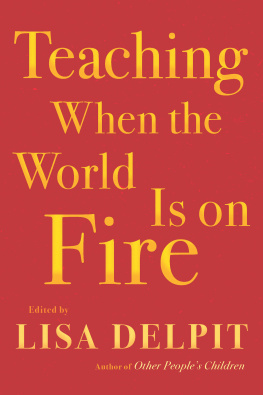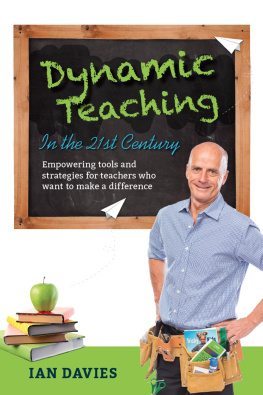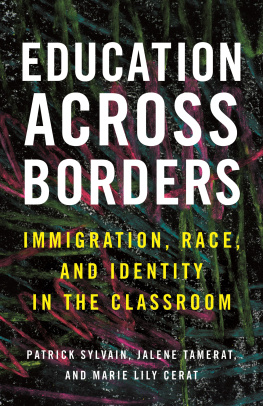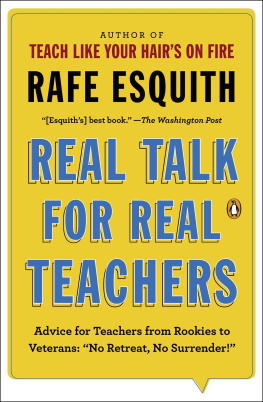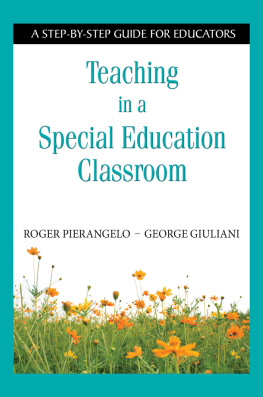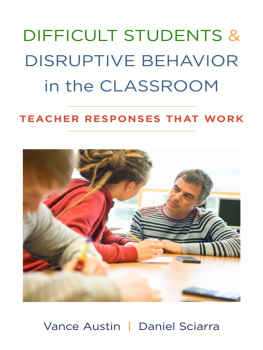
TEACHING WHEN THE WORLD IS ON FIRE
Also by Lisa Delpit
Other Peoples Children: Cultural Conflict in the Classroom
Multiplication Is for White People: Raising Expectations for Other Peoples Children
Also edited by Lisa Delpit
The Skin That We Speak: Thoughts on Language and Culture in the Classroom
(with Joanne Kilgour Dowdy)
TEACHING WHEN THE WORLD IS ON FIRE
EDITED BY
LISA DELPIT

To Adelaide Sanford, Septima Clark, Asa Hilliard, Gloria Hebert, Edmae Delpit Butler, and all the other phenomenal educators upon whose shoulders I stand.
And to Patricia Lesesne, Makeesha Coleman, Fernanda Pineda, Charity Parsons, the Urban Teacher Leaders at Southern University, my former students from throughout the country, and all the other young, brilliant educators who have given me the honor and privilege of sharing their teaching journeys. I humbly watch as they set new kinds of fires and change the world.
Contents
Lisa Delpit
William Ayers
Justin Christensen
Julia Putnam
Mica Pollock
H. Richard Milner IV
Pedro A. Noguera
Jeff Collier
fredrick scott salyers
Carla Shalaby
T. Elijah Hawkes
Jamilah Pitts
Christopher Emdin
Wayne Au and Jesse Hagopian
Sarah Ishmael and Jonathan Tunstall in conversation
Allyson Criner Brown
Natalie Labossiere
Crystal T. Laura
Camila Arze Torres Goitia
Dale Weiss
Hazel Edwards and Maya Lindberg in conversation
Amy Harmon
Bill Bigelow
Carolina Drake
Noah Cho
Cami Touloukian
James Loewen
Deborah Almontaser
Jay Fung
Introduction
Lisa Delpit
I REMEMBER SIXTH GRADE. I REMEMBER SITTING IN FRONT OF THE FAMILY television, mesmerized and terrified by the newscasts showing Bull Connors snarling police dogs attacking young black teenagers, and snarling white policemen simultaneously assaulting them with clubs and powerful fire hoses. I remember how afraid I was when my older sister participated in civil rights protests with her Southern University classmates. I remember adults fury, frustration, and tears when we heard about four little girls murdered by a bomb while they were in church in Birmingham. I remember how neighborhood rumors periodically spread through the childrens grapevine that the KKK would be riding through our community. I remember the day that JFK was shot and the stunned horror that followed in the events wake. In the mornings, as I combed my hair in my mothers room to prepare for school, I remember watching long lists of names of young men who had been killed in the Vietnam War scroll on the Today Show. I remember talk about the Cold War, and the drills in school where we huddled under our desks with our hands over our heads to protect ourselves from a nuclear attack. Early in that school year, I remember spending hours in church with other students at my small all-black Catholic school to rosary-away the Cuban missile crisis. (Apparently it worked!)
Yes, 196364, my sixth-grade year, was tough for me and for all my age mates. The next few years were pretty tough as well, as the fight for civil rights escalated, the Vietnam War intensified, and the Cold War heightened. It was a difficult time to be a child.
And yet, somehow the world feels more frightening nowfor children and adults. In the 1960s, there were certainly right-wing politicians, with their only slightly veiled appeals for violence, focused on maintaining segregation and depriving people of color of their citizenship rights. There were organized and unorganized thugs who beat, battered, and killed African Americans who stood up for those rights. Children were afraid for themselves and for their loved ones.
But at the same time, the federal government at least gave lip serviceand occasionally supportto the battles waged by its darker citizens. Our leaders could make appeals to the White House to shame the administration into addressing blatant injustices. Citizens of all colors shared a moral outrage that made those who beat young civil rights demonstrators, those who prevented eighty-year-olds from registering to vote, those who threw eggs at school buses and snarled invectives at school children seem barely human.
There was a sense that for all the horror, all the fear, all the injustice, there was always someone higher up watching with disapproval: there were allies who wanted to help right indescribable wrongs; there were those who would denounce hatred and its repercussions; there were those who would physically protect the attacked. There were those who knew better.
Today, our children can have no reassurance that the nation has a moral high ground. Rather, all morality from the top has sunk beneath the putrid waters of racism, misogyny, homophobia, xenophobia, irrationality, and despotic bluster. What does it mean to children who not only can see no salvation from on-high, but who find themselves victimized by their highest leaders and the policies they enact? What does it mean when their fellow countrymen join in the victimization with no censure from the highest office of the land? And how are teachers to deal in their classrooms with this current political climate?
This book attempts to answer such questions through an array of responses from classroom teachers, administrators, education professors, and others, reminding todays teachers of their guiding principles and offering constructive, hands-on advice for navigating our nations choppy waters. A first section on politics opens with a masterful ode to teaching when the world is on fire, in which veteran educator William Ayers urges teachers to post on our bathroom mirrors a list of our reasons for entering the teaching profession, to be reminded daily of our ideals, and to affirm that every student is a three-dimensional being of incalculable value. Justin Christensen, who teaches AP Government in San Francisco, documents five concrete ways to engage students in discussions about Donald Trump without taking sides. Michigan principal Julia Putnam shows us what restorative justice looks like in a school setting. Education researcher and author Mica Pollock illuminates the role of preventive speech in the classroom, offering strategies for combatting hate, and speaking of the critical role for educators in teaching young people to engage across perspectives. Finally, H. Richard Milner IV, professor and editor-in-chief of Urban Education, provides concrete tips for respectfully engaging students in difficult conversations.
While the Cold War fear of nuclear attack was real when I was in sixth grade, the danger of deadly violence is even more imminent to todays students. Young people fear losing their lives from school gun violence in a very real way. I was recently in a kindergarten class when an active shooter alert was called over the loudspeaker. The teacher locked all the doors, the children huddled in the coat closet with their hands covering their heads, while the teacher issued fierce whispered warnings to be silent. The teacher and children were clearly rattled, with one ending up in tears. It turned out to be a drill, but it reminded me that these drills were considerably more likely to be harbingers of actual events than my sixth-grade drills.
Next page
